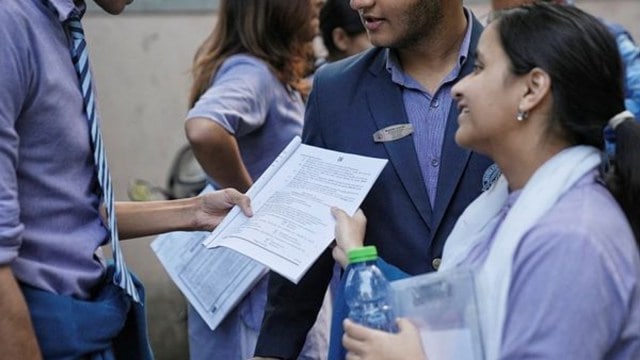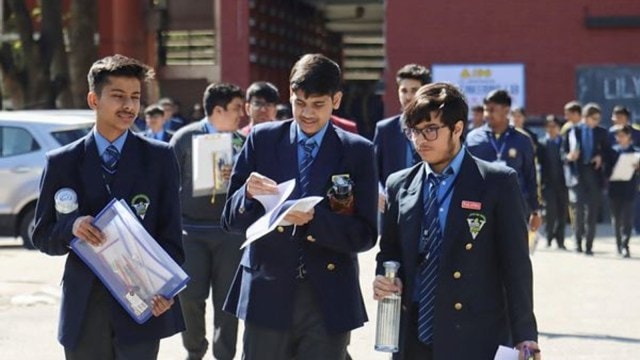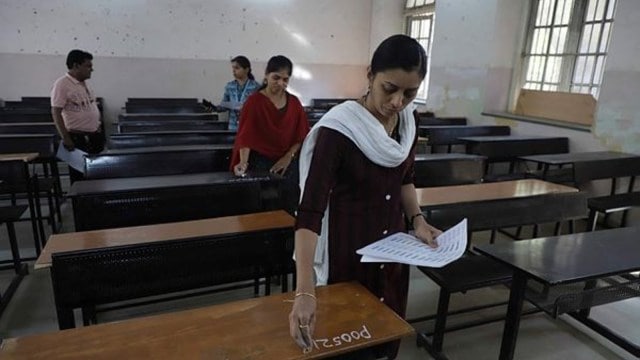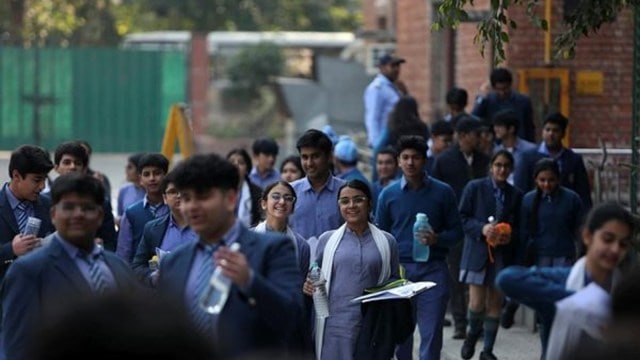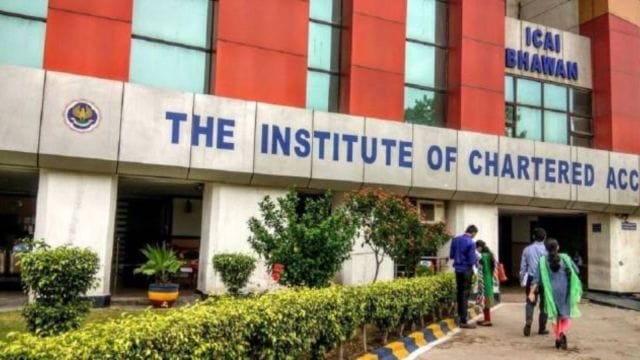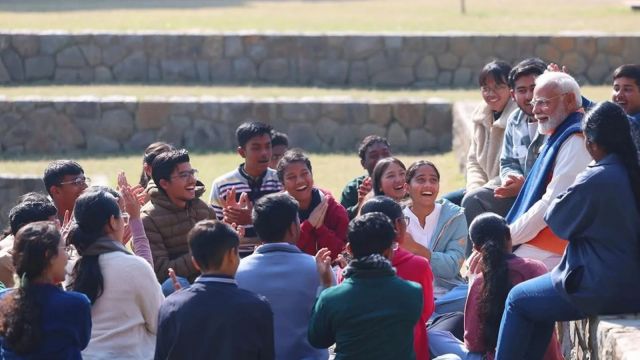
UPSC Key: Bulldozer justice, Semaglutide, and Lancet study on diabetesSubscriber Only
Syllabus:
Preliminary Examination: Indian Polity and Governance – Constitution, Political System, Panchayati Raj, Public Policy, Rights Issues
Mains Examination: General Studies II: Government policies and interventions for development in various sectors and issues arising out of their design and implementation
What’s the ongoing story: The Supreme Court on Wednesday held that demolishing the properties of citizens without following due process for the sole reason that they may be involved in some crime is contrary to the rule of law and directed that officials indulging in such “high-handed actions” be made accountable. The court also issued certain directions that have to be complied with before properties are demolished.
Key Points to Ponder:
• What are the principles of natural justice?
• What is bulldozer justice?
• What is the rule of law?
• What is the right to shelter?
• How are property rights protected in India?
• What are the important SC rulings on the right to property?
• How does ‘bulldozer justice’ violate the separation of power and public trust?
Key Takeaways:
• A bench of Justices B R Gavai and K V Viswanathan ruled that “the executive cannot become a judge and decide that a person accused is guilty and, therefore, punish him by demolishing his residential/commercial property/properties. Such an act of the executive would be transgressing its limits”.
• The bench added that “if the executive acts as a judge and inflicts penalty of demolition on the citizen on the ground that he is an accused, it violates the principle of separation of powers”.
• The Supreme Court said, “Right to shelter is one of the facets of Article 21. Depriving such innocent people of their right to life by removing shelter from their hands, their heads in our considered view would be wholly unconstitutional…”.
• It said that before embarking on demolition, “the concerned authorities must satisfy themselves that such an extreme step of demolition is the only available [option] and the other options including compounding and demolition of only part of the house property are not available.”
Explained: SC on ‘bulldozer justice’
• The verdict came just days after then Chief Justice of India D Y Chandrachud, while hearing a case regarding a man whose home was illegally demolished by the UP government as a part of a road widening project, referred to such demolitions “bulldozer justice”.
• The case pertained to a set of pleas that challenged the “extra-legal” practice of demolishing houses of people accused of criminal activities. The practice has been observed in recent years in BJP-ruled states such as Uttar Pradesh, Madhya Pradesh, and Uttarakhand. It was also seen in Rajasthan, during Congress rule in 2022.
• The guidelines laid down by the SC place emphasis on transparency and giving the accused and their family sufficient time to handle their affairs. The SC clarified that the guidelines will not apply to “an unauthorised structure in any public place…”
• PROVIDING NOTICE: The SC said a minimum of 15 days prior notice must be given for a person to respond to before demolition is carried out, starting from the date that the owner or the occupier receives the notice.
• HEARING & FINAL ORDER: After conducting a hearing where the minutes are properly recorded, the SC said the final order must mandatorily contain certain information. This includes the arguments made by the owner or the occupier, why the authority (such as the local municipal corporation) believes the case cannot be settled, and whether the entire construction or only a part is to be demolished.
• THE AFTERMATH: If the authority passes a final order for demolition, and after the property owner or the occupier receives the order, the SC said, “the order will not be implemented for a period of 15 days”. This allows the owner or the occupier to either remove the construction or challenge the final order in court and seek a stay order.
• At the end of this second 15-day period, if the final demolition order has not been stayed and the construction has not been removed, demolition can be carried out.
• The SC relied on several fundamental constitutional and legal principles that are violated when the illegal demolition of an accused person’s property takes place.
• SEPARATION OF POWERS: The verdict stresses that the judiciary is entrusted with “adjudicatory” (decision-making) powers to decide if an accused person is guilty, and whether any of the organs of the state have “transgressed” their limits.
• PUBLIC TRUST & TRANSPARENCY: The SC said public officials must be held accountable for both their actions and inactions. Officials who “take the law in their hands” and pass demolition orders on the ground that the owner or occupier of the property is an accused “should be made accountable for such high-handed actions,” according to the court.
• RIGHT TO SHELTER: The SC noted that the accused is not the only one who lives or owns such properties. It highlighted that the right to life with dignity under Article 21 of the Constitution includes the right to shelter. Depriving this right of the other innocent people living in the same house as the accused would be “wholly unconstitutional”, according to the SC.
Do You Know:
Opinion: On ‘bulldozer justice’ Supreme Court sends a message. Will it be heard?
• In essence, the Court has confirmed that justice cannot be found at the end of a bulldozer, that punishment without due process violates fundamental rights.
• The apex court’s reiteration and defence of the basic principles of natural justice is welcome and necessary. However, for those who have lost their homes and businesses already, it is already too late.
• For the Court’s eloquent defence of rights and legal principles to have substance it must percolate to every judicial officer in the country. More importantly, it is up against a political logic that is becoming increasingly widespread.
• Those who have been at the receiving end of the bulldozer’s excesses cannot knock, in most instances, at the doors of the apex court. For them, it is the local councillor and the local thana that is the visible arm of the state, that so often strong-arms them. It is here that a change in attitude must occur.
• The SC’s verdict must resonate outside the portals of the judiciary, amongst politicians and administrators who represent the face of the state to common people.
Other Important Articles Covering the same topic:
????‘Bulldozer justice’: As SC talks tough, a look at how it became the go-to for some state governments
????Supreme Court: Home ultimate security, bulldozer justice unknown to civilised system
Previous year UPSC Prelims Question Covering similar theme:
(1). What is the position of the Right to Property in India? (UPSC CSE 2021)
(a) Legal right available to citizens only
(b) Legal right available to any person
(c) Fundamental Right available to citizens only
(d) Neither Fundamental Right nor legal right
Syllabus:
Preliminary Examination: General Science
Mains Examination: General Studies III: Science and Technology- developments and their applications and effects in everyday life. Awareness in the fields of IT, Space, Computers, robotics, nano-technology, bio-technology and issues relating to intellectual property rights
What’s the ongoing story: Novo Nordisk, the Danish pharmaceutical company that manufactures the popular weight-loss drug Wegovy and diabetes medication Ozempic, has asked authorities in the United States to stop the compounding of these products saying that this could pose safety risks.
Key Points to Ponder:
• What are generic medicines?
• What is the status of generic medicines in India?
• What is semaglutide?
• How manufacturing of drugs is regulated in India?
• How does the drug patent regime function in India compared to the USA?
• What is the evergreening of patents?
• What is bioavailability?
• What are the concerns related to generic medicines?
Key Takeaways:
• US Food and Drug Administration (FDA) regulations allow human drug compounding — in which licensed pharmacists or physicians can combine, mix, or adjust the ingredients of a medication — to meet patient needs when popular branded formulations are in short supply.
• Wegovy and Ozempic, both of which contain semaglutide, have been in heavy demand for months, and many compounding pharmacies in the US have created their own versions to cope with this.
• On October 22, Novo Nordisk asked USFDA to put semaglutide on the Demonstrable Difficulties for Compounding (DDC) list, which restricts pharmacies from compounding a drug, especially when commercial versions are available.
• The FDA considers a drug for the DDC list if factors such as its stability, dosage requirements, bioavailability, or necessary sterile handling make it difficult to create a safe and effective compounded version.
• It has also flagged that compounded versions have led to reported adverse effects, which have been recorded in the FDA’s Adverse Event Reporting System (FAERS).
• Delivery mechanism: The delivery mechanism of a drug refers to the way it is sent and released into the body so that it works effectively.
• Bioavailability: This refers to the degree to which the active ingredient in a drug reaches the bloodstream and becomes usable by the body.
• The company has said that semaglutide has naturally low bioavailability — and a compounded version that is not absorbed properly may not produce the intended effects. Ineffective treatment of obesity and diabetes can result in heart attacks, strokes, nerve damage, kidney disease, and may even require amputations.
• Contamination, stability risk: The company has underlined that compounding semaglutide requires specialised facilities and equipment, and that the risk of contamination is a major concern. Contamination with other ingredients can potentially occur if the equipment is not sanitised thoroughly.
• Novo Nordisk has also said that semaglutide is a temperature-sensitive drug and storing it at temperatures higher than 30 degrees Celsius can compromise its stability.
Do You Know:
• India is a pioneer in the global biosimilar market. It was the first country to approve a biosimilar product for Hepatitis B. Today, there are 98 approved biosimilars in India, with at least 50 in the market, the most in any country. Many India-made biosimilars have been approved in markets like the US.
• The Indian biosimilar market was valued at $349 million in 2022 and is estimated to expand at a growth rate of 25.2 per cent per annum from 2022 to 2030 to reach $2,108 million by 2030.
• Under the Make in India Initiative, the Centre has launched the National Biopharma Mission (NBM) — an industry-academia collaborative mission managed by the Biotechnology Industry Research Assistance Council. This $250 million mission, co-funded by the World Bank, aims to accelerate biopharmaceutical development.
• Despite these efforts, India has a mere 3 per cent share of the global biosimilar market. One of the biggest barriers faced by Indian biosimilar manufacturers is patent evergreening.
Other Important Articles Covering the same topic:
????Knowledge Nugget of the day: Patent evergreening
????Tweaks in drug formulations to extend copyrights is a public health challenge
Previous year UPSC Prelims Question Covering similar theme:
(2) Consider the following statements: (UPSC CSE 2019)
1. According to the Indian Patent Act, a biological process to create a seed can be patented in India
2. In India, there is no Intellectual Property Appellate Board.
3. Plant varieties are not eligible to be patented in India.
Which of the statements given above is/are correct?
(a) 1 and 3 only
(b) 2 and 3 only
(c) 3 only
(d) 1, 2 and 3
Syllabus:
Preliminary Examination: Current events of national and international importance
Mains Examination: General Studies-II, III: Effect of policies and politics of developed and developing countries on India’s interests, Indian diaspora; Effects of liberalisation on the economy,
What’s the ongoing story: Robert Lighthizer, a staunch protectionist and an architect of the tariff battles of Donald Trump’s first term, might once again lead the President-elect’s pursuit of his frequently cited trade goals of reciprocal market access.
Key Points to Ponder:
• What do you understand by the term ‘trade war’?
• What was the impact of the US-China trade war on India?
• How is the change in American leadership going to impact India-USA relations?
• What could be the potential impact on the Indian economy following the change in leadership in the United States?
• What are the areas of cooperation between India and the US?
• Organization to look for: World Trade Organization
Key Takeaways:
• Trade economists suggest that while China and its “cheap” exports might be Trump’s primary target, it is in New Delhi’s best interests to advocate for reform at the World Trade Organization (WTO), and play an active role in preserving a rules-based trade order to safeguard future growth.
• Lighthizer has long argued that the United States’ liberal trade policies—pursued after the collapse of the Soviet Union in 1989 with the hope of spreading free-market capitalism globally—are misguided. He believes that while free trade enables easier imports and boosts corporate profits, it leads to job losses that ultimately harm local communities.
• Having spent decades helping manufacturing companies in the US seek tariff protection against unfair competition, the former attorney also believes that the WTO has become detrimental to American interests by restricting the country’s sovereign right to protect its industries through tariffs.
• In 2019, he effectively disabled the WTO’s dispute settlement body by blocking the appointment of judges necessary to achieve quorum. This allowed Trump to impose tariffs on countries without repercussions from the apex trade body.
• Abhijit Das, an expert on international trade and former head of the Centre for WTO Studies at the Indian Institute of Foreign Trade (IIFT), said that Trump’s second term could see a ramp-up of actions violating WTO rules, and that tariff retaliation might be India’s only effective means of responding to any additional taxes imposed by the US. This approach proved successful when India raised tariffs on US agricultural products in response to US tariffs on steel and aluminium. A settlement was reached under the Joe Biden administration.
Do You Know:
• C. Raja Mohan writes—“Five themes of concern for India stand out from Trump’s worldview.
1. First is Trump’s plan to “dismantle the regulatory state,” dramatically downsize the bureaucracy, and make it easier for US capital to invest and develop new technologies.
2. Second, Trump is determined to re-industrialise America. He has argued repeatedly that globalisation has played havoc with US manufacturing and the industrial working class.
3. Third, immigration has been one of the issues that has propelled Trump to his historic political comeback in this election. Although his anti-immigration rhetoric has caused much concern in India, Trump has sought to differentiate between “legal” and “illegal” immigration….India will have a deep interest in contributing to the US debate on separating the “bad” immigration from the “good”.
4. Trump’s relationship with China and Russia will be of special interest to Delhi. It was under the first Trump administration that the Quadrilateral framework was revived in 2017. There is no reason to expect that the second would dilute its commitment to limit Chinese power in Asia and the Indo-Pacific.
5. Finally, the Biden years have seen a significant expansion of defence and high technology cooperation between Delhi and Washington. Sustaining and expanding this under the Trump Administration will be a key priority for Delhi.
Other Important Articles Covering the same topic:
???? Recalling India-US relations in Trump 1.0
???? Trump 2.0 and the world
????In Our Opinion: Trump in US is both a challenge and opportunity for India in climate negotiations
Previous year UPSC Mains Question Covering similar theme:
‘What introduces friction into the ties between India and the United States is that Washington is still unable to find for India a position in its global strategy, which would satisfy India’s National self-esteem and ambitions’. Explain with suitable examples. (UPSC CSE 2019)
Syllabus:
Preliminary Examination: Current events of national and international importance
Mains Examination: General Issues II: Issues relating to development and management of Social Sector/Services relating to Health, Education, and Human Resources.
What’s the ongoing story: A quarter of adults living with diabetes globally are in India (212 million of the 828 million) according to a Lancet report, published on World Diabetes Day. Based on data till 2022, the other nations with the most diabetics are China (148 million), US (42 million), Pakistan (36 million), Indonesia (25 million) and Brazil (22 million).
Key Points to Ponder:
• What are the different types of diabetes?
• What are non-communicable diseases?
• What is the burden of diabetes in India?
• What are the reasons for the rising diabetes burden in India?
• How are anaemia and iron deficiency connected to diabetes?
• What are the government initiatives to tackle the diabetes problem in India?
Key Takeaways:
• The study, conducted by the NCD Risk Factor Collaboration (NCD-RisC) in collaboration with WHO, is the first global analysis of trends in both diabetes rates and treatment. Researchers used data from over 140 million 18-plus people available in more than 1,000 studies.
• They used the two most commonly used diagnostic criteria — a fasting plasma glucose (FPG) level of 7.0 mmol/L or 126 mg/dL and HbA1c (average blood sugar count of three months) count of 6.5 percent or higher.
• Top diabetologist Dr C S Yajnik says his paper in 2012 had highlighted how anaemia and iron deficiency elevated HbA1c levels, leading to potential misdiagnosis of diabetes/pre-diabetes in people who have normal glucose tolerance but are anaemic. “Hence glucose measurements are preferred in countries where anaemia and iron deficiency are prevalent,” he says.
• Accordingly, without the inclusion of HbA1c, the prevalence of diabetes in India in 2022 was 14.4 per cent (69 million) among women and 12.2 per cent for men (62 million) — 131 million in total — in the ICMR-INDIAB study.
• Obesity and poor diets are risk factors globally. “India needs ambitious policies in lower-income regions on restricting unhealthy foods, making healthy foods affordable and even free in school meals, promoting safe places for walking and exercising, including free entrance to public parks and fitness centres,” says Dr Anjana.
• Worldwide three out of five 30-plus people (59 per cent or 445 million) did not receive medication for diabetes in 2022, three-and-a-half times the number in 1990 (129 million). In 2022, almost 64 million men and 69 million women with untreated diabetes lived in India.
Do You Know:
• Diabetes mellitus is a group of conditions that arise when the levels of glucose (sugar) in our blood are higher than normal. There are actually more than ten types of diabetes, but the most common are type 1 and type 2.
• Type 1 diabetes is an autoimmune condition where the body’s immune system attacks and destroys the cells in the pancreas that make the hormone insulin. This leads to very little or no insulin production.
• Insulin is important for moving glucose from the blood into our cells to be used for energy, which is why people with type 1 diabetes need insulin medication daily. Type 1 diabetes usually appears in children or young adults.
• AGEs, or Advanced Glycation End Products, are harmful compounds that form when proteins and sugars combine under high heat or prolonged exposure, said consultant dietician and diabetes educator Kanikka Malhotra
• “This process, called glycation, occurs naturally in the body, but it can also be accelerated by consuming certain foods like processed meat, baked goods, fried and canned foods. While the exact mechanisms are still being researched, studies suggest that AGEs can contribute to diabetes in several ways,”…
• AGEs can interfere with the body’s ability to use insulin, a hormone that regulates blood sugar levels. This can lead to insulin resistance, a condition where cells become less responsive to insulin. Over time, insulin resistance can contribute to the development of type 2 diabetes.
Other Important Articles Covering the same topic:
????What is type 1.5 diabetes? It’s a bit like type 1 and a bit like type 2 — but it’s often misdiagnosed
????Diabetes epidemic in India being fueled by these foods, first-of-its-kind ICMR study reveals
Previous year UPSC Mains Question Covering similar theme:
“Besides being a moral imperative of Welfare State, primary health structure is a necessary pre-condition for sustainable development.” Analyze. (UPSC CSE 2021)
Appropriate local community level healthcare intervention is a prerequisite to achieve ‘Health for All’ in India. Explain. (UPSC CSE 2018)
Syllabus:
Preliminary Examination: General issues on Environmental Ecology, Biodiversity and Climate Change – that do not require subject specialisation
Mains Examination: General Studies II: Government policies and interventions for development in various sectors and issues arising out of their design and implementation.
General Studies III: Achievements of Indians in science & technology; indigenization of technology and developing new technology
What’s the ongoing story: Arunabha Ghosh writes: As COP29 negotiations play out in the shadow of Donald Trump’s win in the US and conflicts in West Asia, one thing is clear: India will have to decarbonise equitably without slowing down its economy while also attracting climate finance to drive investments.
Key Points to Ponder:
• What is energy security?
• What is the circular economy?
• What is the status of India’s solar capacity?
• What are the initiatives taken by the government to adopt solar energy?
• What is the current status of Renewable Energy in India?
• What are the initiatives taken by the government to promote Renewable Energy?
• What are the challenges related to Renewable energy in India?
Key Takeaways:
• India’s power demand will nearly double by the end of this decade, with peak demand set to reach nearly 370 GW by 2031-32. That means every few years, we will need inflexion points in how energy investments are flowing, infrastructure is being built, and new business models are emerging.
• India must consider seven fundamental shifts to build a strong economy that stands on the shoulders of a clean, resilient and robust energy system. People must form the core of this green economy.
• First, shift from centralised to decentralised energy systems. Distributed renewable energy (DRE) sources can be a critical pillar of building energy systems at scale. India has already shown ambition with its rooftop solar push that plans to solarise 10 million households, which could add 30 GW of clean power. However, the price for rooftop solar is too high for most consumers in the lower economic slabs who consume less power… New kinds of market-driven interventions and business models, such as community solar or community partners, can tackle this.
• Second, shift the narrative from capital expenditure (capex) to operational expenditure (opex). We have often thought of energy systems as a capex story. For the clean energy transition, we have to start thinking about pricing energy better through an opex model.
• Third, shift from short-term financial risk to climate-resilient clean energy and business investments. It is comparatively risky to invest in emerging markets, but much of that has to do with perceived risks than real ones. We also cannot ignore the shocks we are already facing at 1.4 degrees of warming.
• Fourth, rather than fixating on industrial policy, think of plugging into supply chains. Beyond a point, India cannot currently afford protectionist sustainability-linked industrial policies like those of the US or the EU. These policies need not be the most efficient route of trying to make the whole economy a vertically integrated firm.
• Fifth, bring together the decarbonisation and digitalisation revolutions by shifting focus from hardware to software. India is undergoing two fast-paced revolutions — the country now has over 820 million active internet users, with more than half coming from rural areas, and is decarbonising its power systems at the same time.
• Sixth, move from a linear to a circular economy. This not only helps energy systems, but also enhances our critical mineral security. A recent CEEW study found that cumulative waste from India’s existing and new solar energy capacity could reach up to 600 kilotonnes by 2030 — equivalent to filling up 720 Olympic-size swimming pools.
• Finally, bring people to the centre of the energy transition. There is a need to shift from financing power developers to financing end-use consumers.
Do You Know:
• India has ranked 63rd out of 120 countries in the 2024 Global Energy Transition Index, which is an improvement from its previous position of 67th in 2023.
• India has been advancing in its energy equity, security, and sustainability, particularly in the renewable energy sector, where renewable sources and biomass account for 42% of its power generation capacity.
• India is leading the way towards creating outcomes that may be replicated abroad while making strides in energy fairness, security, and sustainability.
Other Important Articles Covering the same topic:
????This is what’s slowing down the clean energy transition
????Why India and China have pushed against climate change-related trade measures at COP29
Previous year UPSC Prelims Question Covering similar theme:
(3) Consider the following statements: (UPSC CSE 2016)
1. The International Solar Alliance was launched at the United Nations Climate Change Conference in 2015.
2. The Alliance includes all the member countries of the United Nations.
Which of the statements given above is/are correct?
(a) 1 only
(b) 2 only
(c) Both 1 and 2
(d) Neither 1 nor 2
Previous year UPSC Mains Question Covering similar theme:
Explain the purpose of the Green Grid Initiative launched at World Leaders Summit of the COP26 UN Climate Change Conference in Glasgow in November, 2021. When was this idea first floated in the International Solar Alliance (ISA)? (UPSC CSE 2021)
Syllabus:
Preliminary Examination: Indian Polity and Governance – Constitution, Political System, Panchayati Raj, Public Policy, Rights Issues
Mains Examination: General Studies II: Structure, organisation and functioning of the Executive and the Judiciary—Ministries and Departments of the Government; pressure groups and formal/informal associations and their role in the Polity.
What’s the ongoing story: Upendra Baxi writes: D Y Chandrachud retired as Chief Justice of India last week. His normative labours in over eight years at the Supreme Court include, as of November 6, 612 judgments across 1,274 Benches, as per Supreme Court Observer (SCO). According to SCO data, the highest number of his judgments are in service (16 per cent), criminal (15 per cent) and constitutional and civil matters ( 10 per cent each). This is a proud record, brimming with new concepts and ideas.
Key Points to Ponder:
• How is the Chief Justice of India appointed?
• What are the constitutional provisions related to the Supreme Court?
• What is the structure of the judiciary in India?
• What is the National Judicial Appointments Commission (NJAC) Act?
• What are the important judgments passed by D Y Chandrachud?
• What is the constitutional conception of judicial independence?
Key Takeaways:
• Most of the critique (of DY Chandrachud) has been directed at his off-bench performances, with some ungenerously suggesting that these impacted his judicial decisions. Such criticism overlooks the fact that the constitutional conception of judicial independence is always, as I have previously described, “independence within dependence” — a relative, not an absolute, independence.
• The number of justices, the terms of service, their age of superannuation and pensions are determined by Parliament. And the Supreme Court itself has conceded in the NJAC decision that a collegium system means “limited primacy of both the President and CJI”.
• We have also learned that the former CJI has always been “a person of faith”— this is unproblematic since the fundamental right to the freedom of conscience and religion is guaranteed by constitutional jurisprudence.
• However, I maintain that it is the judicial duty of all serving Supreme Court justices to follow the Bommai discourse which brilliantly distinguishes between constitutional and political secularism.
• Additionally, a certain degree of judicial aloofness is expected in judicial conviviality with the executive. To quote myself immodestly: “The distance between Tilak Marg (where the SCI sits) and Shastri Bhawan (where the law minister is located) is geographically very small but constitutionally very vast.”
• Constitutional courts do have their own politics of interpretation — a disinterested constitutional affair from which they have nothing to gain by way of personal benefit, in contrast to competitive party politics which must benefit from decisions (as shown in my book, The Indian Supreme Court and Politics, 1960).
• A high priority of robust dialogue between the CJI and political executive should be to subject post-superannuation assignments to a two-year cooling off period, as suggested by Arun Jaitley. No CJI has done this, but a legacy-seeking CJI ought to have done so with determination and datafication: We lack data on how many justices have declined such assignments and how many have been actually invited.
• Finally, there is the matter of distressing denunciation of prior precedents. The CJI made some harsh remarks against Justices Krishna Iyer and O Chinnappa Reddy, on whether the state is obliged to acquire and distribute individual “private” property for common good…
• The import of the word “socialist” in the preamble of the Constitution is at stake; to reduce past judicial decisions to mere regime-favouring is unworthy. Moreover, it is anachronistic to read the past as prelude to ideologies of de-constitutionalisation, de-politicisation, de-democratisation and de-juridification of major issues of governance and development.
Do You Know:
• President Droupadi Murmu on Thursday appointed Justice Sanjiv Khanna as the 51st Chief Justice of India.
• The Chief Justice of India and the other judges of the Supreme Court are appointed by the President under clause (2) of Article 124 of the Indian Constitution. It is mentioned in Article 124 that appointment by the President is to be done “after consultation” with judges of the Supreme Court, as the President may “deem necessary”.
• Article 217, which deals with the appointment of High Court judges, says the President should consult the CJI, Governor, and Chief Justice of the High Court concerned. Further, the tenure of a CJI is until they attain the age of 65 years, while High Court judges retire at 62 years.
Other Important Articles Covering the same topic:
????Pratap Bhanu Mehta writes: D Y Chandrachud, a Chief Justice of his time
????Judging justice: Why it is unfair to compare D Y Chandrachud to A N Ray
Previous year UPSC Prelims Question Covering similar theme:
(4) With reference to Indian judiciary, consider the following statements: (UPSC CSE 2021)
1. Any retired judge of the Supreme Court of India can be called back to sit and act as a Supreme Court judge by the Chief Justice of India with prior permission of the President of India.
2. A High Court in India has the power to review its own judgement as the Supreme Court does.
Which of the statements given above is/are correct?
(a) 1 only
(b) 2 only
(c) Both 1 and 2
(d) Neither 1 nor 2
Syllabus:
Preliminary Examination: General issues on Environmental Ecology, Biodiversity and Climate Change – that do not require subject specialisation
Mains Examination: General Studies III: Conservation, environmental pollution and degradation, environmental impact assessment
What’s the ongoing story: A day after the developing countries rejected a pre-conference draft of the finance agreement here at COP29 climate meet, a new draft emerged on Wednesday reflecting all the various options and ideas proposed by countries, allowing the negotiations to start from scratch.
Key Points to Ponder:
• What is the UN Framework Convention on Climate Change (UNFCCC)?
• Read about the Conference of Parties (CoP).
• What is the agenda of CoP 29?
• Why is there a need for climate finance?
• What were the outcomes of CoP 28?
• What is the developing vs. developed nations debate on the climate finance issue?
• What are some of the criticisms of COP?
• What steps should be taken to tackle the challenge of climate change?
• Terms to know: Greenhouse gases, carbon-neutrality, Nationally Determined Contributions (NDCs), Common but differentiated responsibilities (CBDR), Loss and damage, Carbon market, Carbon credit, carbon footprint.
Key Takeaways:
• The two-week conference is aiming to deliver a comprehensive finance agreement to enable greater availability of money for climate action. Trillions of dollars are estimated to be required every year to fund all the climate actions that countries have promised, or intend, to take, but little is available right now, in relative terms.
• Countries are deeply divided over what can realistically be mustered every year, who all should contribute, what proportion should come from public sources and what left for private mobilisation, how much should be allocated to mitigation, adaptation and loss and damage, and even more basic issues like what classifies, or gets counted, as climate finance.
• Countries have been putting forward their proposals which are widely divergent right now. On Tuesday, the group of G77 and China, which consists of over 130 developing nations, had said that developed countries must agree to mobilise at least 1.3 trillion dollars every year, only to help the developing world fight climate change.
• The developed countries have not proposed any number, though they acknowledge that the requirement is in trillions of dollars a year. But they contend that they alone cannot raise all this money, and that the contributor base must be broadened to include other countries as well.
Do You Know:
• A key issue in finance negotiations is the expansion of contributor base. Right now, only developed countries identified in a list in 1994 UN Framework Convention on Climate Change are obliged to raise finances. These countries argue that the scale of finance required is much higher than the 1990s and therefore others must also contribute.
• They suggest applying some criteria to make others responsible. One suggestion is to include countries with per capita gross national income over USD 52,000. That would bring countries like the UAE, Qatar and Singapore, not part of original list, into the fold. Developing countries reject this idea.
Other Important Articles Covering the same topic:
????Five things you need to know about Conference of the Parties (COP), the world’s biggest climate meeting
????Knowledge nugget of the day: 7 must-know Environmental terms
Previous year UPSC Prelims Question Covering similar theme:
(5) Which one of the following is associated with the issue of control and phasing out of the use of ozone-depleting substances? (UPSC CSE 2015)
(a) Bretton Woods Conference
(b) Montreal Protocol
(c) Kyoto Protocol
(d) Nagoya Protocol
Previous year UPSC Mains Question Covering similar theme:
Describe the major outcomes of the 26th session of the Conference of Parties (COP) to the United Nations Framework Convention on climate change (UNFCCC). What are the commitments made by India in this conference? (UPSC CSE 2021)
Harvey was awarded the 50,000-pound ($64,000) prize for what she has called a “space pastoral” about six orbiting astronauts, which she began writing during COVID-19 pandemic lockdowns.
The Indian Express UPSC Essentials brings to you the October issue of its monthly magazine. Click Here to read. Share your views and suggestions in the comment box or at manas.srivastava@indianexpress.com
Subscribe to our UPSC newsletter. Stay updated with the latest UPSC articles by joining our Telegram channel – IndianExpress UPSC Hub, and follow us on Instagram and X.

 Posts
Posts Sign up as a Teacher
Sign up as a Teacher